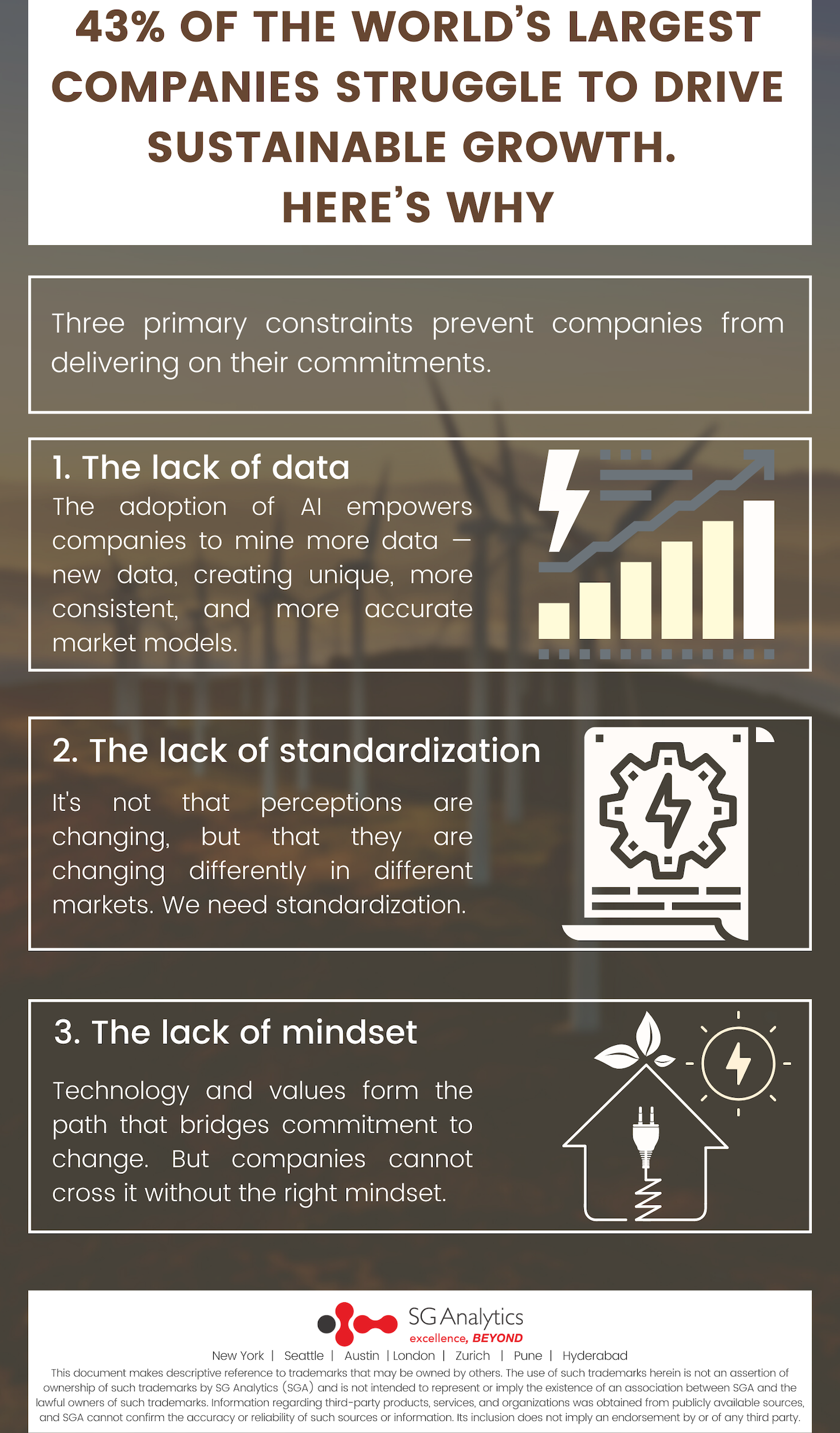Sustainability has been aggressively emphasized as a core corporate aspect for the past few years. An Accenture study found that over 70% of the leading C-suite executives surveyed agreed that deep, holistic integration of sustainable practices would be critical to competing in the future.
That, indeed, seems true.

The increasing value of ESG indexes reflects the changing perceptions and expectations of investors and customers worldwide. Consistently, companies that have demonstrated high ESG performance — companies that have promoted environmental, social, and corporate accountability — also happen to have shown high financial performance. These are the companies that have served stakeholders, not just shareholders.
And if depleting investor trust will not threaten the shutdown of unsustainable companies, governments certainly will. To avoid the severe and extreme weather complications brought on by climate change, eminent government bodies like the European Union are finally proposing proportionally severe and extreme regulations.
Observant readers, however, would have found a thing of note in the text above: the word seems. That’s right. The question is, are corporate entities actually taking action to make the world more habitable, or is the call for urgency just rhetoric?
Two studies claim it’s the latter.
We are not doing enough.
Results or rhetoric?
Companies today may assure stakeholders that their purpose is to become sustainable. However, their actions suggest otherwise. A study by Accenture and another by Black & Veatch has found a wide gap between the commitments made and the measures taken to fulfill them.

According to Accenture’s report, over 43% of 521 of the world’s largest companies have made sustainable commitments but struggle to actually deliver results. To put it another way, the companies have drafted a purpose, even identified future goals, but mostly, that’s it.
A parallel study by Black & Veatch found similar results. Its Corporate Sustainability Goal Setting and Measurement report, created in collaboration with the GreenBiz Group, found that even though the vast majority of respondents aimed to incorporate responsibility and accountability into their business processes and management, many were actually unsure how to do so.
Black & Veatch’s study also involved a variety of companies with a variety of sustainable targets. It mostly involved companies with a revenue greater than $250 million, but also companies with revenue greater than $1 billion as well as $10 billion. Their goals included:
- Greenhouse emissions reduction by generating and using low or no carbon power
- Identify alternate fuels for vehicles
- Identify alternate, green innovations to store and process other energy
- Optimization of water usage
- Scope 3 targets: slashing not just theirs but also other companies’ emissions by disrupting value chains

The targets have been identified. Many are ambitious. The problem is, over 25% of the respondents were unsure how to achieve them. It’s not that these companies are not investing in ESG. They are. Although their actual ESG performance has been below average for the past few years.
The question is, why?
The ‘intention-delivery’ gap and how to bridge it
Three primary constraints prevent companies from delivering on their commitments. Let’s take a look.
1. The lack of data
Data and the technology to collect, manage, and process data are widely available. However, what’s not is the talent and insight to identify what data is relevant.
The reason why companies are advised to widen their net, to make ESG research as comprehensive as possible, is that it’s getting increasingly harder to predict what causes will have what effects, and how.
The problem is, to conduct data analytics on irrelevant data is to waste precious resources. So, how do companies conduct deep, comprehensive, yet efficient ESG research? By adopting artificial intelligence.
Read more: Can AI Help Achieve Environmental Sustainability?
The adoption of AI empowers companies to mine more data — new data, creating unique, more consistent, and more accurate market models. Of course, the models are more expansive, but more importantly, AI-based models are more adaptive. They can monitor and offer insights into near-real-time data. And what’s more critical to sustainability than adaptiveness?

Accenture’s study reported that only over 30% of the participating executives were confident in their ability to predict and respond to changes in the market. Data analytics combined with AI is about to change that.
2. The lack of standardization
The second constraint is the ambiguity or vagueness of ESG indicators. Today, there are no rigid, clearly outlined standards that define what qualifies as sustainable and what does not. While many companies exploit the ambiguity, engaging in what’s called greenwashing, many are outright confused.
Read more: “Greenwashing” Is Misleading ESG Investors – Understanding the Gray Areas
The fact that stakeholder perceptions and expectations are rapidly changing makes their plight worse. Because insights from data analytics are based on historical data, and historical data is becoming irrelevant in mere years. It’s not that perceptions are changing, but that they are changing differently in different markets.
Yes, the integration of AI with ESG research will help companies overcome this constraint. Though not only because AI offers near-real-time insights. But also because it significantly expands our scope of knowledge.
Uncertainty is unavoidable. So, what we can do is identify targets with the maximum magnitude of certainty possible — with a clear understanding of how our technology will impact the global carbon cycle, the associated climate risks, and what opportunities offer the potential to create more ESG value and at what cost.
A clearly defined purpose is easier to commit to.

3. The lack of mindset
Okay, so a company is technologically capable and has identified a clear purpose. So, what’s preventing it from achieving its sustainable goals? Not cultivating the right mindset.
There are several cultural and organizational constraints to cultivating the right mindset. And while ideally, we expect change to happen for the good of change, because contributing to climate change is a moral failing, any economist of merit would tell you that that’s not how change works. A financial reward is more motivating.
So, here’s the incentive: High ESG performance and high financial performance are correlated. According to Accenture, companies with high ESG scores, on average, happen to have a 3.7x operating margin compared to those with low ESG scores. They also happen to generate, on average, 2.6x higher annual returns to shareholders.
Read more: A Post-Pandemic Business Strategy? Here Are 4 Things to Remember
Technology and values form the path that bridges commitment to change. And yet, companies cannot cross it if they don’t want to. They cannot, without the right mindset.
Having trouble knowing what’s green and what’s greenwashed? Get insights. Not illusions. Contact us today.









